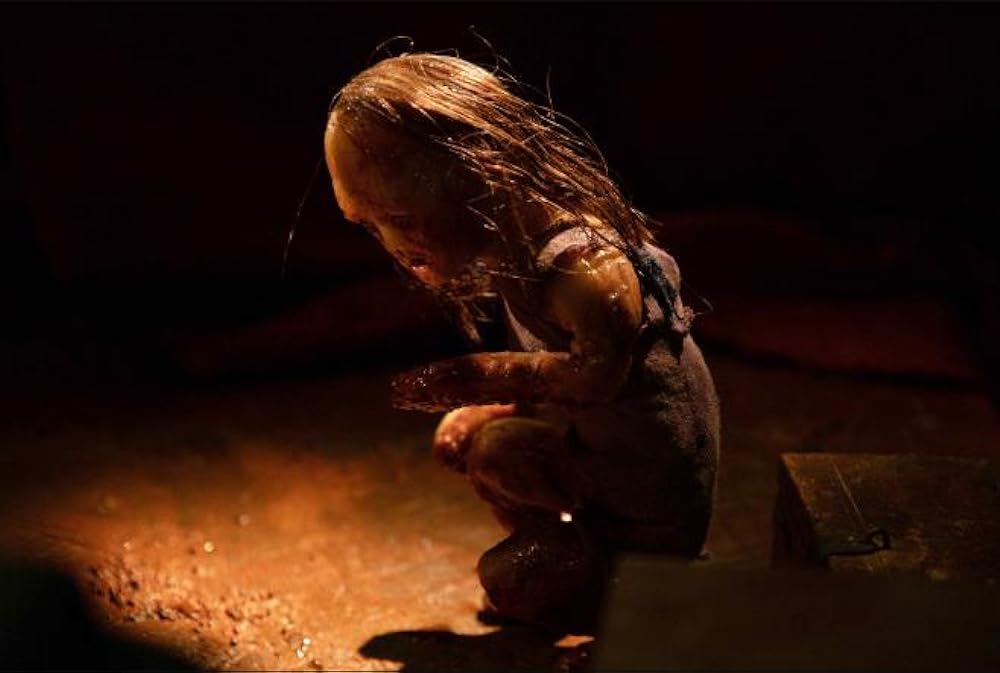“It’s my film.”
“Is it? Then what happens next?”
Robert Morgan’s Stopmotion is a dizzying portrayal of painstaking creative trials in the wake of familial grief, combining sickening body horror with dark, dirty stop-motion animation. It utilises its live-action and animation overlap to build to a climax that will live long in the memory of any viewer.
Stop-motion animation has a long and storied history with horror. Film icons from King Kong to Freddy Krueger have been portrayed in stop motion, and stop motion animated features such as Mad God and The House have enjoyed success among horror fans in recent years. With his feature directorial debut Stopmotion, Robert Morgan and his special effects lead Dan Martin have taken a major step towards joining the ranks of such stop motion legends as Ray Harryhausen and Phil Tippett.
It’s Martin’s creature design that takes centre stage, with his impressive back catalogue of effects work – including the puppets for this year’s Infinity Pool – allowing for evident creative confidence as the puppets become increasingly disgusting through the film’s brief runtime. It may be his feature directorial debut, but there is clear confidence in Morgan’s direction too. His multiple short films of a similar nature have prepared him well as he takes this leap, showing the world of independent horror what a debut feature can be: experimental in a way that refuses to pull punches. He proves himself to be as skilful at directing live-action as he is his signature stop motion, and as the film increasingly blurs the lines between the two, his talent behind the camera really shines its brightest.
The film is a technical success beyond its accomplished stop motion, too. Morgan lights both his live-action and animated sets with an expert hand, setting a precedent early on with the strobe-lit introduction to his protagonist, complemented by some snappy editing. Lola de la Marta offers an effective industrial score, produced in a way that makes it sound like it was recorded in a warehouse with pipes and sheet metal. This metallic sound design permeates the film as a whole, with particular scenes underscored by perhaps-diegetic creaks, as the protagonists derealisation extends to the viewer.
There are touches of grief and childhood trauma-inspired story beats, but the film is at its strongest when it tackles its most interesting theme: the pressure of using your own creative talents to measure your value. The relationship between the protagonist, Ella – played strongly by Aisling Franciosi of The Nightingale – and her mother is interesting not because of the looming grief, but because of the pressure to win her love through talent. The story of artist losing touch with reality perhaps seems familiar – it feels particularly evocative of Berberian Sound Studio – but Stopmotion still feels fresh, largely thanks to the prowess of its creators. Some might say that the film is only effective due to the skill exhibited in its animation, but Stopmotion without stop motion is nothing. The animation and the pain of the creative process is inherent to the film’s existence, as Robert Morgan draws upon his experience as a stop motion creator to pour his own complications into his film.
Although the film is not for the faintest of heart – there are some impressively unpleasant moments – anyone with even a passing interest in horror is sure to find something to like in Stopmotion. Its arresting visuals extend further than just its animation, but it is the way that this animation seeps into its live action that provides the most excitement. It takes a little while to truly become horrifying, but, once it does, you won’t forget it.








